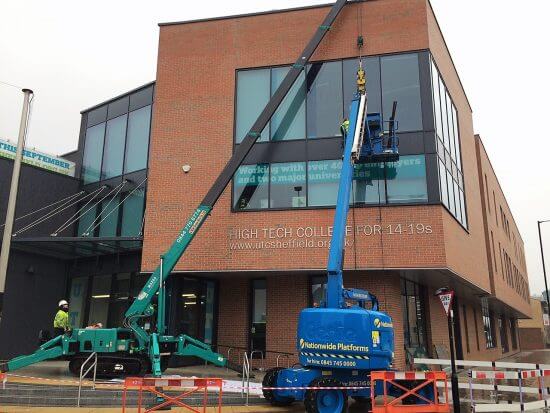Our team have recently underta ken a glass replacement project at Sheffield UTC, for Wates Construction. We believe a spontaneous breakage had occurred as a consequence of a chemical impurity during the glass manufacturing process.
ken a glass replacement project at Sheffield UTC, for Wates Construction. We believe a spontaneous breakage had occurred as a consequence of a chemical impurity during the glass manufacturing process.
Specialist access and heavy lifting equipment was utilised for this work, by our team of engineers. We arranged a minor road closure and all works were conducted within the course of one day to minimise any disruption to the building users and local businesses.
Glass may contain nickel sulphide impurities, in the form of small crystals. As glass is heated during the toughening process these impurities change state. The high temperature a-state of the impurities may be frozen when the glass is quenched, and recovery to the low temperature b-state may then take several years. Spontaneous breakage of the glass may follow, as the low temperature of the nickel sulphide impurities occupies a slightly greater volume and so generates a local stress concentration.
Nickel sulphide breakage of glass exhibits a characteristic fracture pattern. Assuming that the fractured pane remains in place, at the origin or epicentre of the fracture there should be located two fragments which are larger than the rest and which form a ‘figure of 8’ or ‘butterfly’, image. In the centre would be located the inclusion which is a small, round, shiny, yellow-black particle which may be as small as 0.05mm in diameter.
As part of the results of the normal float glass process, one large reputable manufacturer has reported that only 1 critical inclusion occurs in every 13 tonnes of glass that they produce, and that 90% of the inclusions will cause premature breakage during their heat soaking process. This means that only one nickel sulphide inclusion will ‘get through’ for each 8,470 m2 of 6 mm heat soaked toughened glass.
